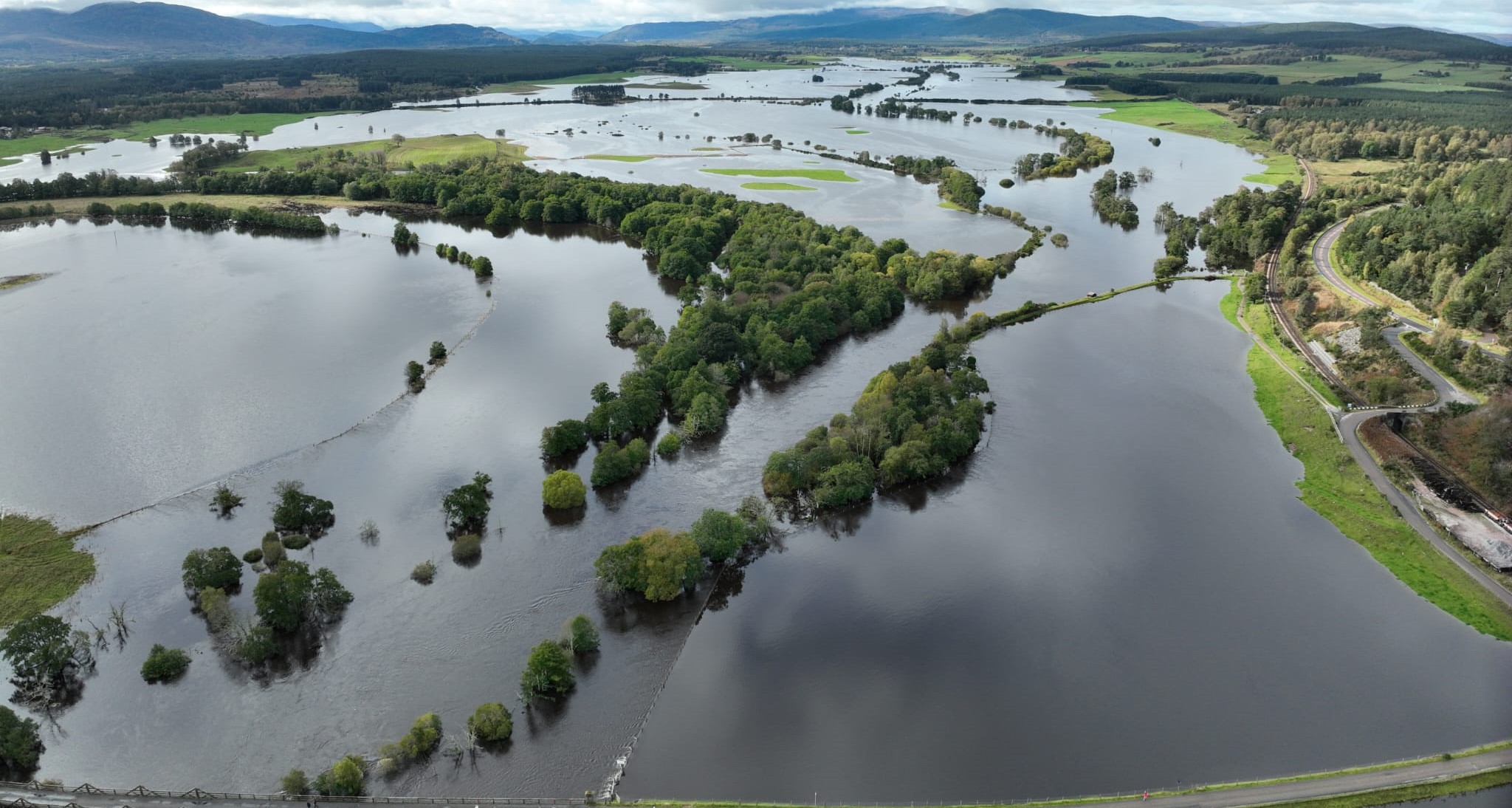Park Talk: hold back the river

Park Talk: hold back the river
By Cllr Chirs Beattie, Cairngorms National Park Authority Board member
I am starting to lose count of how many named storms we have had already this season, each one bringing wind, rain and varying degrees of destruction depending on where you are in the country.
As well as a member of the Cairngorms National Park Authority board, I am also a member of Angus Council – an area which received more than its fair share of Babet! It’s a storm that will live long in the memory of our residents over here in the east. The widespread flooding damaged homes and infrastructure across the whole of Angus from the glens to the coast. It has been a very traumatic experience for many and the clean up bill following Storm Babet will be significant.
While not hit to the same degree, I saw images of a flooded River Spey, looking like a massive loch, swallowing up farmland to the dismay of the agricultural community as well as damaging roads, to the dismay of The Highland Council and drivers!
The most recent gathering of the Park Authority board was held in the Angus Glens, although scheduled in the diaries for some time, it turned out to be very timely, following on from Storm Babet. We talked about some of the damage caused by flooding in communities like Brechin, but more importantly, some of the practical actions that can happen high in the river catchments, that can help alleviate flood events further downstream.
Let’s face it – it’s Autumn in Scotland – the weather is supposed to be wet and windy and it is not in our gift to stop the rain falling from the sky but we can try to lessen the impacts of storm events when they happen. And they are happening more frequently as our climate changes.
However, in partnership with land managers and other partners we can make a difference.
The Park Authority is already working with many land owners and managers to mitigate the impacts of climate change, with peatland restoration happening at scale and pace high up on the hills, along with river restoration and woodland expansion projects bringing direct benefits to people and biodiversity. This type of activity helps to slow the flow, holding as much water back as possible at critical times.
As the impacts of climate change result in more severe weather and increased flood events, we must look to how we adapt and how we continue to deliver nature based solutions.
We know that a multi partnership approach is needed to tackle the issue of flooding and while flood defences in towns and villages at risk are crucial, by restoring river catchments and therefore slowing the flow of water, this will bring benefits downstream and be part of a wider solution.
What happens in the National Park has implications for towns and villages out with the Park, especially those communities living alongside the National Park’s major rivers like the Dee, the Don, the Spey and the South and North Esks. I realise that nature based solutions will take time to take effect and will not on their own prevent flooding but I hope that these solutions mean the impacts of future storms can be tamed a little.
Alert
Latest from the National Park
Pulling together in wake of wildfires
An update from Park Authority Convener Sandy Bremner and Chief Executive Grant Moir on collective efforts to tackle wildfires in the National Park going forward.
The Moorland Indicators of Climate Change Initiative
Update on wildfire situation
Convener Sandy Bremner and Chief Executive Grant Moir have given an update on the ongoing wildfire situation.
Relevant alerts
-
There is an extreme risk of wildfire impacting the National Park from Friday 11 July until Monday 14 July.
- Do not light any fire or barbeque
- Always ensure cigarettes are fully extinguished and take your litter (including glass) away with you
- Enjoy the outdoors responsibly - most wildfires are caused by human activity
- Stay alert - with dry vegetation and warm weather, fires can start easily, spread rapidly, and burn intensely
- If you see a wildfire, dial 999
For updates, visit the Scottish Fire and Rescue Service website.




